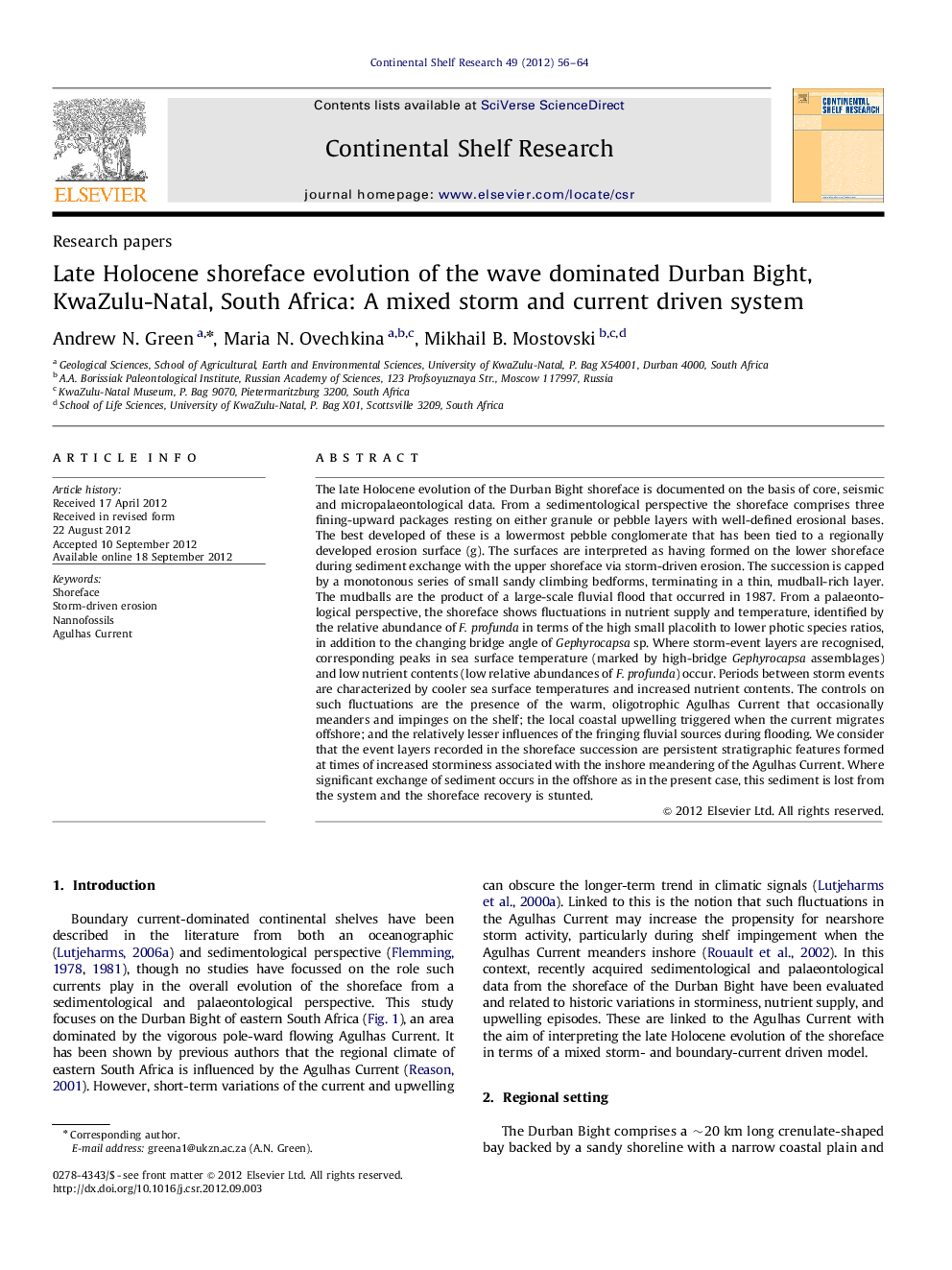| Article ID | Journal | Published Year | Pages | File Type |
|---|---|---|---|---|
| 4532320 | Continental Shelf Research | 2012 | 9 Pages |
The late Holocene evolution of the Durban Bight shoreface is documented on the basis of core, seismic and micropalaeontological data. From a sedimentological perspective the shoreface comprises three fining-upward packages resting on either granule or pebble layers with well-defined erosional bases. The best developed of these is a lowermost pebble conglomerate that has been tied to a regionally developed erosion surface (g). The surfaces are interpreted as having formed on the lower shoreface during sediment exchange with the upper shoreface via storm-driven erosion. The succession is capped by a monotonous series of small sandy climbing bedforms, terminating in a thin, mudball-rich layer. The mudballs are the product of a large-scale fluvial flood that occurred in 1987. From a palaeontological perspective, the shoreface shows fluctuations in nutrient supply and temperature, identified by the relative abundance of F. profunda in terms of the high small placolith to lower photic species ratios, in addition to the changing bridge angle of Gephyrocapsa sp. Where storm-event layers are recognised, corresponding peaks in sea surface temperature (marked by high-bridge Gephyrocapsa assemblages) and low nutrient contents (low relative abundances of F. profunda) occur. Periods between storm events are characterized by cooler sea surface temperatures and increased nutrient contents. The controls on such fluctuations are the presence of the warm, oligotrophic Agulhas Current that occasionally meanders and impinges on the shelf; the local coastal upwelling triggered when the current migrates offshore; and the relatively lesser influences of the fringing fluvial sources during flooding. We consider that the event layers recorded in the shoreface succession are persistent stratigraphic features formed at times of increased storminess associated with the inshore meandering of the Agulhas Current. Where significant exchange of sediment occurs in the offshore as in the present case, this sediment is lost from the system and the shoreface recovery is stunted.
► Shoreface comprises event layers linked to storm-driven erosion. ► Nannofossil assemblages reflect changes in Agulhas Current position. ► Storminess and storm-driven erosion linked to inshore migration of the Agulhas Current.
